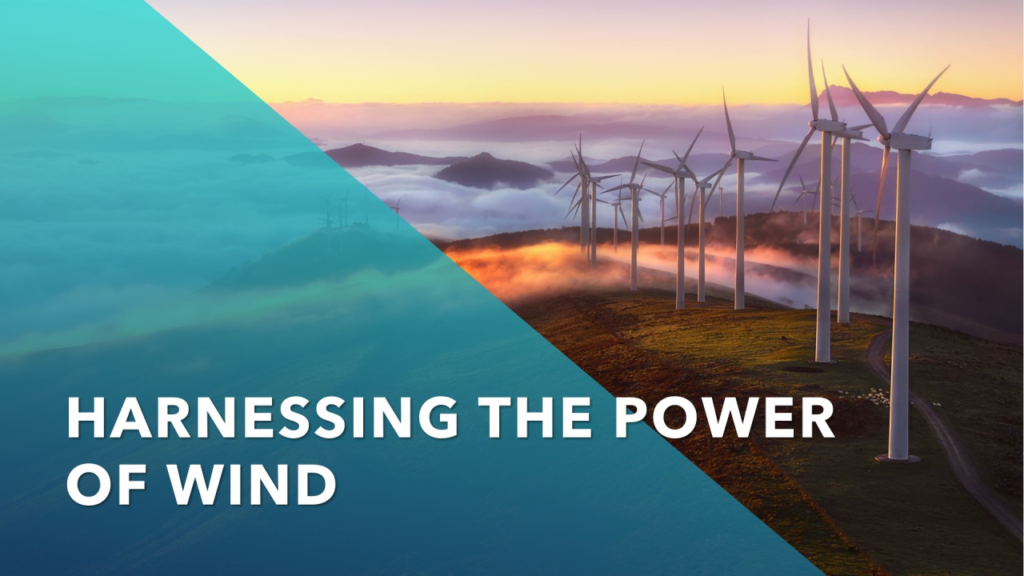Wind energy has become a cornerstone of the global shift towards renewable energy. As countries strive to meet net-zero targets and reduce reliance on fossil fuels, the wind sector has seen unprecedented growth spurred by technological advancements, decreasing costs, and government incentives. This article explores the critical role wind energy plays in driving the energy transition, its current state, and future opportunities.
The State of Wind Energy Today
Wind energy is among the fastest-growing renewable energy sources globally. Onshore wind farms dominate installations, offering a cost-effective means of large-scale energy production. Offshore wind, though requiring higher initial investment, is rapidly expanding due to its potential for higher energy yields and less land-use impact. According to the International Energy Agency (IEA), wind power capacity grew by over 17% in 2023 alone, contributing significantly to global renewable energy generation.
Technological innovation has been a major driver of this growth. Turbines have become larger and more efficient, with some offshore turbines now exceeding 15 MW in capacity. These advancements have reduced the levelised cost of energy (LCOE) for wind, making it competitive with traditional energy sources and, in many cases, cheaper.
The Role of Wind Energy in Decarbonisation
Wind energy’s contribution to decarbonisation is undeniable. A single onshore wind turbine can offset roughly 1,500 tonnes of CO2 annually. When deployed at scale, wind farms can significantly reduce greenhouse gas emissions from the energy sector, which accounts for nearly 73% of global emissions.
In addition to lowering emissions, wind energy enhances energy security. By diversifying the energy mix and reducing dependence on imported fossil fuels, countries can shield themselves from price volatility and geopolitical risks. This is particularly relevant in regions with abundant wind resources, such as Europe, North America, and parts of Asia.
Challenges to Overcome
Despite its advantages, wind energy faces challenges that must be addressed to maximise its potential. Grid integration is one of the most pressing issues. Wind energy’s intermittent nature requires robust grid infrastructure and energy storage solutions to ensure a stable supply. Investments in grid modernisation and technologies like battery storage are essential to overcome this hurdle.
Environmental and social considerations also play a role. Wind farms must be sited carefully to minimise impacts on wildlife and local communities. Public acceptance can be a barrier, with concerns ranging from noise to visual impact. Transparent communication and community engagement are vital to addressing these issues.
Future Opportunities
The future of wind energy is bright. Offshore wind, in particular, offers immense potential. Floating wind turbines, still in their nascent stages, could unlock resources in deeper waters, vastly increasing the available capacity. Emerging markets in Africa, Southeast Asia, and Latin America also present opportunities for growth, as these regions seek sustainable solutions to meet their rising energy demands.
Integration with other technologies will further enhance wind energy’s value. Hybrid systems combining wind with solar and storage can provide more reliable power and optimise land use. Advances in digitalisation, such as predictive maintenance and AI-driven performance monitoring, will continue to improve efficiency and reduce costs.
Enertechnos and the Wind Energy Revolution
At Enertechnos, we recognise the transformative potential of wind energy. Our Capacitive Transfer System (CTS) is designed to optimise energy transmission, reducing losses and increasing efficiency in renewable energy systems. As wind energy becomes a central pillar of the global energy mix, our solutions aim to support its integration into grids, ensuring maximum impact for a sustainable future.
Conclusion
Wind energy is a critical component of the energy transition, offering a clean, abundant, and increasingly affordable alternative to fossil fuels. While challenges remain, ongoing innovation and collaboration across the sector will pave the way for its continued growth. As we look to a net-zero future, wind energy’s role will only become more vital, driving progress towards a cleaner, greener planet.


